
|
It is getting higher gradually in the evening sky. It has reached to 5.5-6.0 mag in early and mid October. Although it has passed the perihelion in late September, it did not fade out after that and still keeps bright. Very strongly condensed and easy to see. In the Northern Hemisphere, it keeps observable in the evening sky until early January while fading gradually after this. In the Southern Hemisphere, it cannot be observable until next April when it becomes fainter than 15 mag.
Date(TT) R.A. (2000) Decl. Delta r Elong. m1 Best Time(A, h)
Oct. 21 15 9.94 38 3.2 1.011 0.892 52 5.8 18:42 (119, 26)
Oct. 28 16 29.11 33 56.1 1.001 0.962 57 6.1 18:35 (109, 36)
|
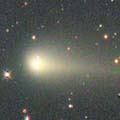
|
Now it reached to the maximum brightness at 9.6 mag (Oct. 19, Maciej Reszelski). Strongly condensed and easy to see. The long dust tail is clearly visible. It keeps 9-10 mag until December, and observable in its best condition. It keeps observable after that until May when it fades down to 16 mag. It will be visible visually for a long time until around March.
Date(TT) R.A. (2000) Decl. Delta r Elong. m1 Best Time(A, h)
Oct. 21 2 9.11 8 47.2 0.694 1.687 172 9.3 0:13 ( 0, 64)
Oct. 28 2 9.11 7 11.1 0.686 1.678 174 9.2 23:42 ( 0, 62)
|
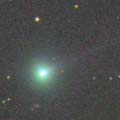
|
New comet discovered visually very near by Saturn. It is very bright, 9.4 mag on Oct. 5 (Juan Jose Gonzalez). But it was fainter than 12 mag in the photo on Sept. 30 (Tetuo Kudo). Probably, it brightened rapidly in early October. It is a short periodic comet with a period of 5.4 years. It may be one of the faint NEOs usually. But it keeps bright as 10.1 mag still now (Oct. 19, Maciej Reszelski). It will be fading gradually after this, but it seems to keep visible visually until December. However, it may fade out rapidly. It keeps locating in the morning sky until winter, then it keeps locating observable until next summer. But in the Northern Hemisphere, it becomes low in the south in 2007.
Date(TT) R.A. (2000) Decl. Delta r Elong. m1 Best Time(A, h)
Oct. 21 10 45.42 3 50.1 1.397 1.008 46 9.8 4:46 (285, 26)
Oct. 28 11 8.55 -0 32.3 1.428 1.031 46 10.0 4:51 (290, 25)
|
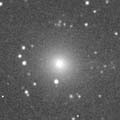
|
It had not been observed for a long time since June. When it appeared again in the morning sky, it has become much brighter than expected, 11.1 mag (Oct. 19, Maciej Reszelski). It will be at opposition in December and it is coming closer to the earth. So it will brighten furthermore after this. It will be visible visually at 9-10 mag until December. It keeps observable in excellent condition in the Northern Hemisphere. It will fade out rapidly after January.
Date(TT) R.A. (2000) Decl. Delta r Elong. m1 Best Time(A, h)
Oct. 21 10 3.06 1 54.7 1.775 1.467 55 11.0 4:46 (294, 33)
Oct. 28 10 0.07 4 11.8 1.609 1.474 63 10.9 4:51 (300, 41)
|
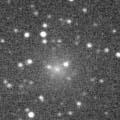
|
Although it was reported so faint as 17 mag at the discovery, it was actually much brighter as 14 mag (Aug. 21, Terry Lovejoy). Then it is brightening rather rapidly and it is already so bright as 11 mag (Oct. 15, Michael Jager and Gerald Rhemann). However, it is very diffuse, locating extremely low in the evening, so it is hard to see. It will pass only 0.17 A.U. from the sun in mid January, and reach to 2.5 mag. But it is not observable at that time. In the Southern Hemisphere, it appears at 5 mag in late January, then it keeps observable while fading gradually. But in the Northern Hemisphere, it is only observable until early November.
Date(TT) R.A. (2000) Decl. Delta r Elong. m1 Best Time(A, h)
Oct. 21 16 35.42 -14 13.6 2.565 1.951 42 11.4 18:42 ( 61, 14)
Oct. 28 16 41.30 -13 58.9 2.524 1.833 37 11.1 18:35 ( 64, 11)
|
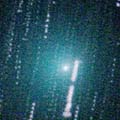
|
Recovered after 117 year blank since 1889. It brightened rapidly in mid July and reached to 8 mag. Then it kept bright at 8 mag with a large diffuse coma until early September. But it has already started fading. Now it is 11.0 mag (Oct. 19, Maciej Reszelski). It has not started fading rapidly yet, and now it is brighter than this ephemeris. However, it may fade out rapidly afteer this and may be too faint to observe soon, because it is very diffuse. In the Northern Hemisphere, it keeps locating very high in the evening sky for a long time after this. It moves around the Northern Pole, so it will be observable all night until November, although it becomes low in the morning.
Date(TT) R.A. (2000) Decl. Delta r Elong. m1 Best Time(A, h)
Oct. 21 21 41.43 72 17.8 0.694 1.385 108 12.3 19:46 (180, 53)
Oct. 28 22 39.63 69 49.8 0.721 1.450 114 12.9 20:16 (180, 55)
|

|
Because it has been locating low in the evening sky, a few observations have been reported. CCD observers reported as 14 mag, but it was reported much brighter visually as 11.5 mag (Oct. 14, Juan Jose Gonzalez). It becomes too low in the evening to observe in October and November. But it will be getting higher in the morning sky after December. Then it keeps 13 mag until March and visible visually for a long time.
Date(TT) R.A. (2000) Decl. Delta r Elong. m1 Best Time(A, h)
Oct. 21 15 8.95 5 39.7 2.862 2.028 27 12.9 18:42 ( 91, 9)
Oct. 28 15 17.50 7 6.1 2.855 2.014 26 12.8 18:35 ( 94, 7)
|

|
Another outburst occured in mid October, and now it becomes very bright as 11.5 mag (Oct. 16, Maciej Reszelski). In this year, it has been bright as 12-13 mag and visible visually since it appeared in the morning sky in early July. It keeps observable in good condition until March.
Date(TT) R.A. (2000) Decl. Delta r Elong. m1 Best Time(A, h)
Oct. 21 4 20.69 31 51.2 5.075 5.848 137 13.3 2:25 ( 0, 87)
Oct. 28 4 18.11 31 51.8 5.010 5.850 144 13.3 1:55 ( 0, 87)
|

|
It has been lost since its discovery in 1986. The condition is good in this return. In calculation, it was expected to be 14 mag from autumn to winter. But actually, it must be much fainter than expected. Although it has been listed up as an observable target since May, it has not been recovered yet. It was probably in outburst and brightened unexpectedly at the discovery. In the Northern Hemisphere, it keeps observable until it fades out in next spring. It is moving away from the Milky Way, so it will be easier to recover.
Date(TT) R.A. (2000) Decl. Delta r Elong. m1 Best Time(A, h)
Oct. 21 19 17.49 -20 48.2 1.229 1.451 80 13.9 18:42 ( 23, 31)
Oct. 28 19 37.59 -20 2.8 1.249 1.433 78 13.8 18:35 ( 23, 32)
|

|
It was missed in 1999 due to the bad condition. The condition is good in this return. It will reach to 13.5 mag in November. Although it is too low in the Northern Hemisphere now, it locates high in the Southern Hemisphere. It must be already bright as 14 mag, but it has not been recovered yet. It is getting higher gradually after this also in the Northern Hemisphere.
Date(TT) R.A. (2000) Decl. Delta r Elong. m1 Best Time(A, h)
Oct. 21 19 23.96 -41 40.1 0.845 1.186 79 14.2 18:42 ( 14, 12)
Oct. 28 19 51.60 -38 52.7 0.825 1.160 78 14.1 18:35 ( 14, 15)
|

|
It had been unobservble for a long time. When it appeared again in the morning sky, it has showed a cometary activity and it has become much brighter than expected, as 14.3 mag (Oct. 15, Ken-ichi Kadota). It may be visible visually at 13 mag. It keeps 13-14 mag until March. It is observable in good condition in the Southern Hemisphere. However, in the Northern Hemisphere, it rises only up to 20 degree in November, then it moves southwards and is only observable until December.
Date(TT) R.A. (2000) Decl. Delta r Elong. m1 Best Time(A, h)
Oct. 21 10 47.33 -8 47.9 2.690 2.075 42 14.3 4:46 (295, 18)
Oct. 28 11 0.13 -12 0.4 2.617 2.053 45 14.2 4:51 (301, 19)
|

|
Now it is 14.9 mag (Oct. 16, Katsumi Yoshimoto). Completely asteroidal. It did not brighten at all since early September. Although the slight cometary activity was detected in late July, its faint tail became too hard to detect now. In the Northern Hemisphere, it keeps good condition after this. It keeps locating high until next spring. If it keeps asteroidal after this, it will be 14 mag at best. However, it may suddenly become active and brighten rapidly someday.
Date(TT) R.A. (2000) Decl. Delta r Elong. m1 Best Time(A, h)
Oct. 21 20 41.31 30 44.2 0.970 1.591 108 14.3 18:42 ( 1, 86)
Oct. 28 20 38.44 31 13.5 0.966 1.534 103 14.3 18:35 ( 54, 84)
|

|
It has been visible at 13.5 mag for a long time since last autumn until spring. Although it had been unobservable for a while, now it is appearing in the morning sky again. It keeps 14 mag and observable in excellent condition until April. Although it is fainter than last year by 1 mag, it will be visible visually at 14 mag.
Date(TT) R.A. (2000) Decl. Delta r Elong. m1 Best Time(A, h)
Oct. 21 12 18.14 25 9.1 6.102 5.391 41 14.4 4:46 (252, 19)
Oct. 28 12 24.40 24 34.2 6.058 5.406 45 14.4 4:51 (256, 24)
|

|
It had been observed at 10 mag in the evening sky from winter to spring. Although it has been unobservable since May, now it is appearing in the morning sky again. Now it is 14.0 mag (Sept. 25, Jakub Cerny), still visible visually.
Date(TT) R.A. (2000) Decl. Delta r Elong. m1 Best Time(A, h)
Oct. 21 9 48.23 24 51.3 3.639 3.376 66 14.5 4:46 (271, 49)
Oct. 28 9 53.56 24 31.5 3.610 3.445 72 14.6 4:51 (276, 54)
|

|
It reached up to 10.3 mag on July 7 (Juan Jose Gonzalez). Then it is fading gradually. Now it is 14.3 mag (Oct. 16, Katsumi Yoshimoto). It will be too faint to see visually soon. It keeps locating at the same altitude in the evening sky until January when it will be fainter than 18 mag.
Date(TT) R.A. (2000) Decl. Delta r Elong. m1 Best Time(A, h)
Oct. 21 21 2.47 -29 34.0 1.550 2.007 101 14.7 19:04 ( 0, 26)
Oct. 28 21 13.77 -28 5.6 1.655 2.044 97 15.0 18:48 ( 0, 27)
|
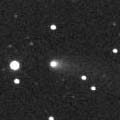
|
It is bright as 13.2 mag and visible visually (Sept. 27, Seiichi Yoshida). It keeps locating at the same altitude until December. But it will be too faint to see visually soon.
Date(TT) R.A. (2000) Decl. Delta r Elong. m1 Best Time(A, h)
Oct. 21 22 6.84 -22 38.0 2.790 3.372 117 15.3 20:08 ( 0, 32)
Oct. 28 22 7.99 -22 7.7 2.893 3.385 111 15.5 19:41 ( 0, 33)
|

|
It is observable in good condition in the Southern Hemisphere. But it is not observable until January in the Northern Hemisphere. It is expected to be already bright as 15.5 mag, and to be 14.5 mag in winter. But actually, it did not brighten at all after discovered at 17.5 mag in May. It is still faint as 17 mag in October.
Date(TT) R.A. (2000) Decl. Delta r Elong. m1 Best Time(A, h)
Oct. 21 7 36.44 -61 59.8 2.917 2.936 81 15.5 4:46 (354, -8)
Oct. 28 7 21.54 -63 29.4 2.837 2.899 83 15.4 4:51 (359, -8)
|

|
It is observable in good condition at 15 mag in September and October. It will fade out after this, and will be fainter than 18 mag in December.
Date(TT) R.A. (2000) Decl. Delta r Elong. m1 Best Time(A, h)
Oct. 21 23 38.56 54 29.4 0.635 1.484 129 15.5 21:38 (180, 71)
Oct. 28 23 26.19 46 60.0 0.711 1.562 132 15.8 20:59 (180, 78)
|
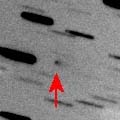
|
It was expected to reach to 13 mag in winter. But actually, it is so faint as 16.7 mag still now (Oct. 20, Filip Fratev), much fainter than expected. It will be observable in an excellent condition in November and December. However, it may be 14.5 mag at best, or even fainter.
Date(TT) R.A. (2000) Decl. Delta r Elong. m1 Best Time(A, h)
Oct. 21 7 3.62 9 35.7 1.116 1.631 100 15.8 4:46 (348, 64)
Oct. 28 7 16.19 11 37.5 1.046 1.619 105 15.5 4:51 ( 0, 67)
|
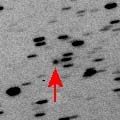
|
Now it is 16.5 mag (Sept. 2, Ken-ichi Kadota). A bit fainter than this ephemeris, but it keeps 16 mag until December. It keeps observable until February when it becomes fainter than 18 mag.
Date(TT) R.A. (2000) Decl. Delta r Elong. m1 Best Time(A, h)
Oct. 21 9 26.07 10 14.7 1.733 1.624 66 15.6 4:46 (294, 45)
Oct. 28 9 40.47 7 38.8 1.698 1.642 69 15.6 4:51 (301, 47)
|

|
It was in major outburst unexpectedly and reached to 10.5 mag in its last appearance in 1999. It was already recovered in 2005 October. But it has not been observed for 1 year since that. So the current brightness is quite uncertain. It has already appeared in the morning sky. It is expected to be 15.5 mag, but actually, it can be much fainter than this ephemeris. It will fade out gradually after this.
Date(TT) R.A. (2000) Decl. Delta r Elong. m1 Best Time(A, h)
Oct. 21 11 22.44 5 2.3 2.550 1.869 37 15.8 4:46 (278, 19)
Oct. 28 11 36.95 3 2.6 2.529 1.892 40 15.9 4:51 (282, 22)
|

|
It is outside of Jupiter's orbit, so it keeps observable for a long time. Now it is 15.6 mag (Sept. 1, Y. Sugiyama). In 2006, it is still faint and locating somewhat low. But in 2007 and 2008, it is expected to be bright as 14.5-15 mag. It will locate high at that time, so it may be visible visually.
Date(TT) R.A. (2000) Decl. Delta r Elong. m1 Best Time(A, h)
Oct. 21 18 31.57 -20 45.3 6.738 6.466 70 15.8 18:42 ( 34, 26)
Oct. 28 18 31.48 -20 27.6 6.831 6.442 63 15.9 18:35 ( 39, 24)
|
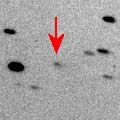
|
It brightened up to 16.7 mag on Sept. 12 (B. Brinkmann). However, it did not brighten furthermore after that, 17.2 mag on Oct. 7 (Ken-ichi Kadota). In its last apparition, it became brightest about 4 months after the perihelion passage. In this apparition, it was expected to reach up to 15.5 mag and to be observable in good condition from November to January. However, maybe it has already started fading.
Date(TT) R.A. (2000) Decl. Delta r Elong. m1 Best Time(A, h)
Oct. 21 6 0.82 15 5.2 1.302 1.964 116 16.0 4:04 ( 0, 70)
Oct. 28 6 4.32 15 7.0 1.261 1.985 122 15.9 3:40 ( 0, 70)
|

|
Appearing at dawn. Although it has not been observed since April, it must be already bright as 16.5 mag. It is observable at 15.5-16 mag until next spring. But, in the Northern Hemisphere, it locates somewhat low at 20-30 degree high.
Date(TT) R.A. (2000) Decl. Delta r Elong. m1 Best Time(A, h)
Oct. 21 8 30.72 -20 36.4 4.206 4.063 74 16.2 4:46 (331, 29)
Oct. 28 8 27.00 -22 12.3 4.082 4.045 80 16.1 4:51 (341, 30)
|
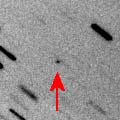
|
Although it was so faint as 20.7 mag on Aug. 2 (P. Birtwhistle), it brightened rapidly as expected, and reached up to 16.5 mag on Oct. 16 (Katsumi Yoshimoto). The condition of this apparition is excellent. It keeps 16.5 mag until November. But it will be fainter than 18 mag in December.
Date(TT) R.A. (2000) Decl. Delta r Elong. m1 Best Time(A, h)
Oct. 21 5 0.44 37 35.3 0.628 1.468 127 16.5 3:04 (180, 88)
Oct. 28 5 8.02 43 6.7 0.606 1.465 131 16.4 2:44 (180, 82)
|

|
It kept 16.5 mag for a year and a half since early 2005. It will start fading after November, and will be fainter than 18 mag at the end of 2006.
Date(TT) R.A. (2000) Decl. Delta r Elong. m1 Best Time(A, h)
Oct. 21 23 43.85 36 2.9 3.078 3.920 143 16.7 21:44 (180, 89)
Oct. 28 23 39.53 33 22.8 3.140 3.957 140 16.8 21:12 ( 0, 88)
|

|
Now it is 16.3 mag (Oct. 14, Ken-ichi Kadota). It is as bright as in last spring. It will be fainter than 18 mag in December.
Date(TT) R.A. (2000) Decl. Delta r Elong. m1 Best Time(A, h)
Oct. 21 4 20.84 3 19.0 1.379 2.235 139 16.7 2:26 ( 0, 59)
Oct. 28 3 51.16 -1 18.8 1.369 2.288 150 16.8 1:29 ( 0, 54)
|

|
Peculiar asteroid moving along an orbit like a comet. It was observable in excellent condition at opposition in October, then it reached to 16.5 mag. It will fade out gradually after this, and will be fainter than 18 mag in January.
Date(TT) R.A. (2000) Decl. Delta r Elong. m1 Best Time(A, h)
Oct. 21 1 3.73 -4 29.1 1.360 2.328 162 16.7 23:04 ( 0, 50)
Oct. 28 1 0.61 -5 33.4 1.360 2.300 154 16.8 22:33 ( 0, 49)
|
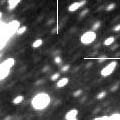
|
It keeps 17 mag for a long time after this until the end of 2007. It will be observable in good condition in 2006 autumn and 2007 autumn.
Date(TT) R.A. (2000) Decl. Delta r Elong. m1 Best Time(A, h)
Oct. 21 19 43.59 40 22.7 3.447 3.706 97 16.9 18:42 (119, 77)
Oct. 28 19 50.74 39 19.1 3.469 3.689 94 16.9 18:35 (112, 75)
|
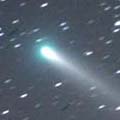
|
It reached to 6 mag at best in early May at the remarkable approach to the earth, when it became double naked eye comets with the component B around the zenith. Now it is going away from the earth and fading. Recently it is fading much more slowly than this ephemeris. It was visible visually at 13.9 mag still in late September (Sept. 27, Seiichi Yoshida). Now it is still bright as 15.3 mag (Oct. 16, Katsumi Yoshimoto), much brighter than this ephemeris. It keeps observable in the evening sky for a while after this.
Date(TT) R.A. (2000) Decl. Delta r Elong. m1 Best Time(A, h)
Oct. 21 0 41.89 -14 54.0 1.043 1.972 150 16.9 22:42 ( 0, 40)
Oct. 28 0 35.75 -13 54.5 1.142 2.035 144 17.3 22:08 ( 0, 41)
|
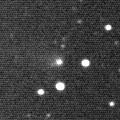
|
It was bright as 15 mag in 2004 and 2005. Now it is far away from the sun, but it is still bright as 16.2 mag (Sept. 23, Ken-ichi Kadota), brighter than this ephemeris.
Date(TT) R.A. (2000) Decl. Delta r Elong. m1 Best Time(A, h)
Oct. 21 0 40.62 -16 43.4 3.261 4.146 148 17.2 22:41 ( 0, 38)
Oct. 28 0 36.72 -16 41.5 3.328 4.162 142 17.3 22:09 ( 0, 38)
|

|
It reached up to 16 mag in 2005 summer in the Southern Hemisphere. It was 16.6 mag on Sept. 19 (Mitsunori Tsumura), a bit brighter than this ephemeris. It will keep 17.5 mag until January after this. Then it will be fainter than 18 mag in February.
Date(TT) R.A. (2000) Decl. Delta r Elong. m1 Best Time(A, h)
Oct. 21 5 46.91 -23 22.3 4.334 4.784 111 17.3 3:50 ( 0, 32)
Oct. 28 5 44.32 -23 29.4 4.303 4.820 115 17.3 3:20 ( 0, 32)
|
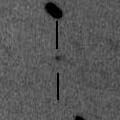
|
Now it is 16.9 mag (Oct. 20, Filip Fratev). The perihelion passage is in 2008. It will be observable for several years after this at around 17 mag. But it may fade out rapidly just after the perihelion passage.
Date(TT) R.A. (2000) Decl. Delta r Elong. m1 Best Time(A, h)
Oct. 21 4 53.21 10 48.7 4.088 4.822 132 17.4 2:57 ( 0, 66)
Oct. 28 4 51.28 10 43.9 4.005 4.810 140 17.3 2:28 ( 0, 66)
|

|
It keeps 17 mag until January. Then it keeps observable util April when it becomes fainter than 18 mag.
Date(TT) R.A. (2000) Decl. Delta r Elong. m1 Best Time(A, h)
Oct. 21 4 51.52 49 18.3 3.221 3.878 124 17.4 2:55 (180, 76)
Oct. 28 4 49.58 50 6.2 3.151 3.871 130 17.4 2:26 (180, 75)
|

|
It keeps 17.5 mag until November. Then it fades out soon.
Date(TT) R.A. (2000) Decl. Delta r Elong. m1 Best Time(A, h)
Oct. 21 1 21.25 -14 5.2 2.292 3.221 154 17.4 23:21 ( 0, 41)
Oct. 28 1 14.24 -13 10.1 2.333 3.236 150 17.4 22:46 ( 0, 42)
|

|
Peculiar asteroid moving along an orbit like a comet. It was observed at 17 mag in February and March. It will be observable at 17 mag again in October and November. But it will fade out soon.
Date(TT) R.A. (2000) Decl. Delta r Elong. m1 Best Time(A, h)
Oct. 21 4 7.82 38 42.7 1.421 2.253 136 17.6 2:13 (180, 86)
Oct. 28 3 25.68 36 55.4 1.377 2.294 150 17.4 1:04 (180, 88)
|

|
Now it is 17.3 mag (Oct. 19, Catalina Sky Survey). It is as bright as last year. It will be fainter than 18 mag in December.
Date(TT) R.A. (2000) Decl. Delta r Elong. m1 Best Time(A, h)
Oct. 21 1 48.24 22 20.6 4.483 5.461 168 17.5 23:48 ( 0, 77)
Oct. 28 1 38.18 21 39.1 4.500 5.478 168 17.5 23:10 ( 0, 77)
|

|
It reached to 6 mag in 2004. It had been visible visually until January. It has already faded down to 17.2 mag (Sept. 27, Ken-ichi Kadota). It will be fading slowly, around 17-18 mag for a while after this.
Date(TT) R.A. (2000) Decl. Delta r Elong. m1 Best Time(A, h)
Oct. 21 2 41.18 -3 58.6 7.144 8.083 159 17.5 0:45 ( 0, 51)
Oct. 28 2 36.88 -4 13.5 7.191 8.139 161 17.6 0:14 ( 0, 51)
|

|
Now it is 17.9 mag (Oct. 1, Ken-ichi Kadota). It will reach to 15 mag two years later.
Date(TT) R.A. (2000) Decl. Delta r Elong. m1 Best Time(A, h)
Oct. 21 2 20.39 7 47.8 3.535 4.519 170 17.8 0:25 ( 0, 63)
Oct. 28 2 16.16 7 29.8 3.523 4.512 174 17.8 23:48 ( 0, 63)
|
|
![]()
 P/1991 V1 ( Shoemaker-Levy 6 )
P/1991 V1 ( Shoemaker-Levy 6 ) C/2005 YW ( LINEAR )
C/2005 YW ( LINEAR ) P/2006 HR30 ( Siding Spring )
P/2006 HR30 ( Siding Spring ) C/2003 WT42 ( LINEAR )
C/2003 WT42 ( LINEAR ) C/2005 E2 ( McNaught )
C/2005 E2 ( McNaught ) 71P/Clark
71P/Clark 117P/Helin-Roman-Alu 1
117P/Helin-Roman-Alu 1 C/2006 K3 ( McNaught )
C/2006 K3 ( McNaught ) (3200) Phaethon
(3200) Phaethon 76P/West-Kohoutek-Ikemura
76P/West-Kohoutek-Ikemura 114P/Wiseman-Skiff
114P/Wiseman-Skiff 52P/Harrington-Abell
52P/Harrington-Abell C/2005 L3 ( McNaught )
C/2005 L3 ( McNaught ) 84P/Giclas
84P/Giclas C/2005 EL173 ( LONEOS )
C/2005 EL173 ( LONEOS ) 112P/Urata-Niijima
112P/Urata-Niijima C/2005 B1 ( Christensen )
C/2005 B1 ( Christensen ) C/2006 CK10 ( Catalina )
C/2006 CK10 ( Catalina ) 2006 QL39
2006 QL39 C/2006 M1 ( LINEAR )
C/2006 M1 ( LINEAR ) 73P-C/Schwassmann-Wachmann 3
73P-C/Schwassmann-Wachmann 3 P/2004 F3 ( NEAT )
P/2004 F3 ( NEAT ) C/2004 L2 ( LINEAR )
C/2004 L2 ( LINEAR ) 173P/2005 T1 ( Mueller 5 )
173P/2005 T1 ( Mueller 5 ) P/2005 SB216 ( LONEOS )
P/2005 SB216 ( LONEOS ) P/2006 S4 ( Christensen )
P/2006 S4 ( Christensen ) 2006 BZ8
2006 BZ8 C/2005 R4 ( LINEAR )
C/2005 R4 ( LINEAR ) C/2003 K4 ( LINEAR )
C/2003 K4 ( LINEAR ) 74P/Smirnova-Chernykh
74P/Smirnova-Chernykh![]()


























